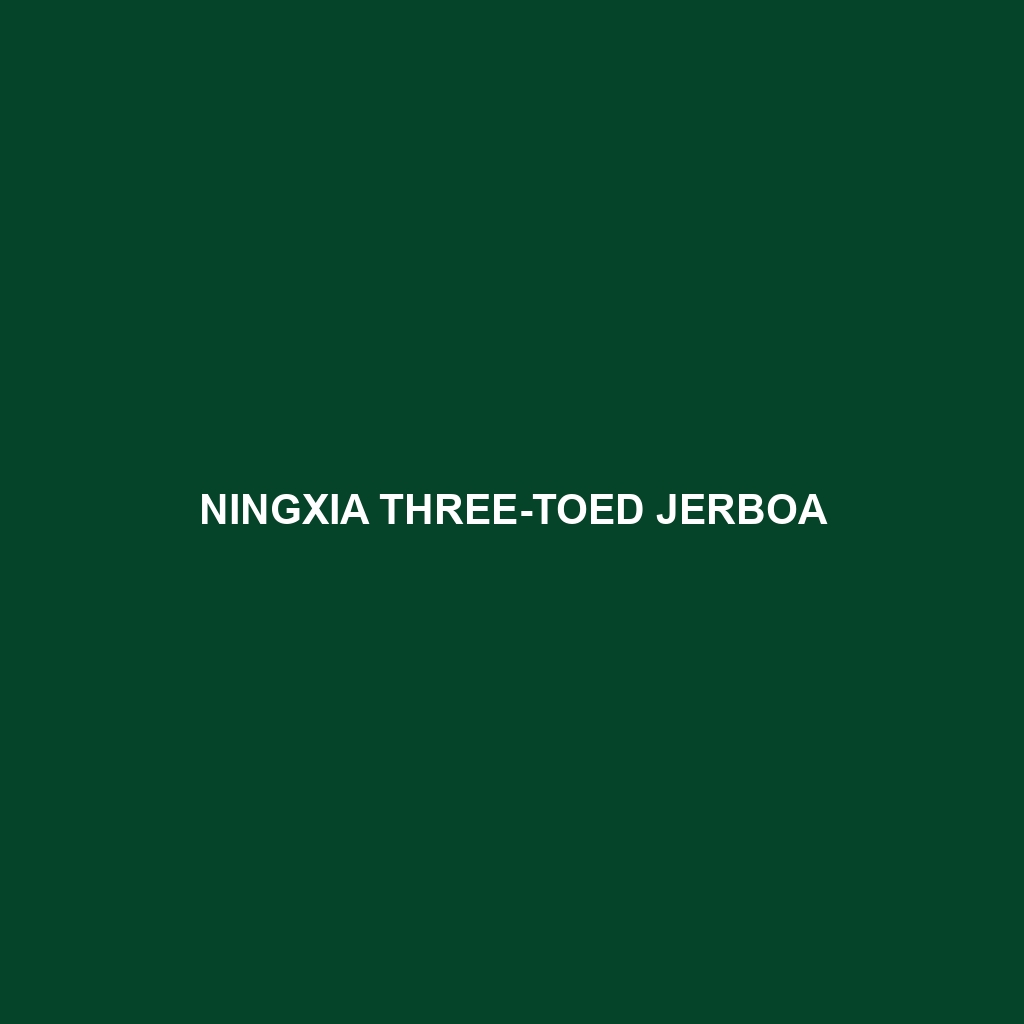Ningxia Three-toed Jerboa
Common Name: Ningxia Three-toed Jerboa
Scientific Name:
Habitat
The Ningxia Three-toed Jerboa is primarily found in the arid desert regions of Ningxia Hui Autonomous Region in north-central China. This tiny mammal prefers sandy and loose soil environments, often dwelling in grasslands and dry, flat areas characterized by sparse vegetation. The unique climatic conditions of this habitat—a mix of extreme temperatures and minimal rainfall—play a crucial role in the survival of this species.
Physical Characteristics
The Ningxia Three-toed Jerboa is a small rodent, typically measuring about 10 to 12 centimeters in length, with a tail that can exceed its body length. Its fur is predominantly sandy-brown, allowing it to blend seamlessly into its desert surroundings. Notable features include its elongated hind legs, which are specialized for jumping, and prominent ears that aid in temperature regulation and detecting predators. The presence of three toes on each hind foot makes this species unique among jerboas.
Behavior
These jerboas exhibit nocturnal behavior, emerging primarily at night to avoid the heat of the day. They are highly adept at jumping, using their powerful hind legs to navigate their arid habitat swiftly. Social structures are commonly observed, often with individuals living in family units, demonstrating cooperative behaviors that enhance their survival in harsh environments. Their burrowing activities also play a role in controlling insect populations, contributing to the ecological balance.
Diet
The diet of the Ningxia Three-toed Jerboa consists mainly of seeds, roots, and other plant materials. They have adapted to their environment by developing a feeding strategy that allows them to extract moisture from their food, reducing their dependence on water sources. This herbivorous diet makes them integral to the dispersal of plant seeds within their ecosystem.
Reproduction
Breeding typically occurs during the warmer months, with gestation lasting approximately 25 to 30 days. Female Ningxia Three-toed Jerboas usually give birth to 2 to 5 offspring per litter. The young are born blind and dependent on their mother, becoming independent after several weeks. Notable behaviors during the breeding season include male displays of agility to attract females, adding a layer of competition within their social structure.
Conservation Status
The Ningxia Three-toed Jerboa is currently categorized as vulnerable due to habitat loss stemming from agricultural expansion and urban development. Conservation efforts are essential to preserve its natural habitat and maintain ecological balance in the region.
Interesting Facts
This diminutive rodent is known for its incredible jumping ability, which can span over 3 meters in a single leap. Additionally, the Ningxia Three-toed Jerboa plays a crucial role in its ecosystem as both a seed disperser and a food source for predators, making it an integral part of the desert food web.
Role in Ecosystem
The Ningxia Three-toed Jerboa serves as both predator and prey in its ecosystem. As a seed disperser, it contributes to plant propagation, supporting the growth of vegetation in arid landscapes. In turn, it provides sustenance for larger predators, including birds of prey and foxes, highlighting its importance in maintaining ecological balance within its habitat.
